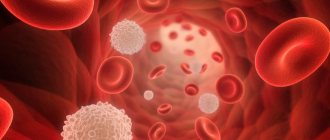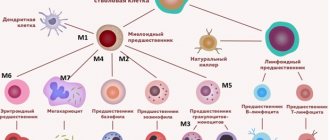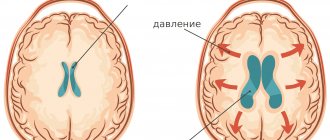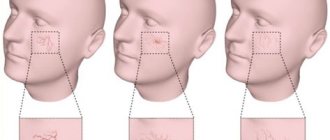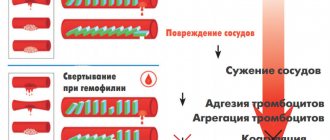Hyperemia is
The definition of Hyperemia comes from the merger of two Greek words, where “hyper” means too much, and “haima” means blood. When blood accumulates in some part of the body or near some organ, we speak of hyperemia. Externally, it manifests itself as redness of the problem area, and sometimes the body temperature may rise locally. Sometimes a rush of blood causes tissue swelling.
There are several reasons that cause hyperemia. First of all, possible pathologies of the blood supply are identified: the inflow and outflow of blood in a specific area. If there are no problems in the circulatory system, then other possible causes are determined, including:
- temperature changes;
- stress;
- hormonal disorders;
- allergic reactions;
- infectious lesion;
- burn.
It is necessary to eliminate hyperemia from the diagnosis, since it is not a disease in itself, but is considered by medicine exclusively as a symptom.
Manifestations of violation
If the gastroscopy conclusion indicates that hyperemic gastric mucosa is observed only in some places, that is, focally, then this indicates the initial stage of inflammation in the walls of the stomach.
It is important to understand that this is not an independent disease. The cause of hyperemia of the gastric mucosa is the development of one or another pathology in the epigastric region. Under no circumstances should you leave your well-being to chance if you begin to be bothered by painful sensations in the upper stomach, nausea and heartburn. Contact your doctor immediately. Hyperemic focal gastric mucosa is one of the symptoms of many diseases of this organ, but they can only be identified with a thorough examination.
In a normal state, the gastric mucosa has a pink tint, a smooth surface, and reflects the shine of the corresponding equipment. The thickness of the folds of the mucosa is 5-8 mm. When straightened with air, the folds should completely disappear and expand.
Types of hyperemia
Hyperemia is primarily considered as a pathology of the circulatory system. There are two types of pathological hyperemia:
- arterial;
- venous.
Arterial is called excessive blood supply to an organ when the arteries supply large volumes of blood that the venous system does not have time to remove. Arterial hyperemia can be physiological when more blood begins to flow to the organ during increased load. And venous is called hyperemia, which occurs during normal blood supply, which the venous system cannot drain due to the resulting pathology. For example, with blockage, thrombosis, or atherosclerosis, the lumen of the vascular bed is significantly reduced, and the passage of blood flow is significantly hampered.
The cause of venous hyperemia may be low blood rheology. When it is thick, it is difficult for the heart to pump it throughout the body system. In such a situation, you need to undergo an examination to confirm the problem, and in case of really thick blood, the doctor will prescribe treatment. Most often, it is enough to buy a drug that thins the blood and reduces the risk of blood clots.
The neurotonic type of hyperemia is said to occur when the tone of the nerve conductors increases under the influence of certain factors. First of all, this is facilitated by emotional activity. The second factor that increases the tone of nerve fibers is infectious diseases affecting the nervous system.
Along with an increase in the conductivity of nerve fibers, there is also a reverse reaction - a decrease in tone. As a rule, this is a temporary phenomenon caused by many reasons, such as tissue compression, swelling, hypothermia. As soon as the obstacle to the passage of arterial blood is removed, the tissues are filled with biological fluid with increased intensity, which causes the effect of hyperemia.
Multiform exudative pathologies
The etiology is still not fully understood. The cause is believed to be an infection present in the body. The disease is usually chronic, with constant relapses. Symptoms of erythema multiforme exudative type are:
- slight increase in temperature;
- pain in muscles and joints;
- rashes with a central papule and clear boundaries of spots, located mainly on the bends of the limbs;
- uneven color of spots;
- symmetrical location of rashes on the body;
- tendency to grow with the formation of “garlands”;
- slight deterioration in general health.
The main difficulty is diagnosis, since the signs partially correspond to a number of other diseases. Before prescribing a course of therapy, differential diagnosis is carried out. Medicines are selected taking into account the age characteristics of the patient.
Facial hyperemia
Facial hyperemia can occur as a result of a complex of vascular problems. A similar situation occurs with high blood flow speed and increased pressure. In addition, a small difference in the oxygen content between arterial and venous blood forces the heart and lungs to work harder, which provokes redness.
After a walk in the frosty air, hyperemia also occurs. It is caused by a sharp narrowing of the thin capillaries of the facial skin in response to low temperatures, which is replaced by a sharp increase in blood flow. This is how the body understands that there are areas of the body that are not protected by clothing, which need to be ensured vitality by being warmed by the bloodstream.
But there is also other redness caused by an allergic reaction to frost. This is the body's pathological response to cold. Such redness does not go away for a long time, even after returning to a warm room. This reaction indicates a decrease in immunity and the body’s inability to protect itself from adverse external factors.
Allergic facial hyperemia can be distinguished from physiological hyperemia by several signs. For allergies:
- redness occurs on all open areas of the body;
- hyperemia may take the form of urticaria;
- skin itching appears;
- the mucous membrane swells;
- there is a flow from the nose or tear duct;
- headache appears.
The temperature rarely rises during an allergic reaction.
Nodular pathologists
The causative agent of erythema nodosum is usually streptococcus, and less often - some other infections. It often occurs against the background of tonsillitis, scarlet fever, and tuberculosis. You can recognize it by the following signs:
- rashes of bright red color, with bulges forming in the subcutaneous layer;
- asymmetrically located spots;
- gradual bluing of the spots, then yellowing, similar to the resorption of bruises;
- presence of fever;
- painful sensations and itching in the affected areas of the skin;
- the presence of multiple seals on the legs.
The patient is prescribed a course of antibiotics, antihistamines, as well as external treatment with antiseptics.
Forecast
A favorable prognosis is possible only with timely treatment of the pathology. Treatment of the disease is complicated by the characteristics of its causative agent, the bacterium Helicobacter pylori. This microorganism is capable of temporarily stopping its vital activity and going into “sleep mode”. When a provoking factor occurs, activity resumes.
Therapy must be carried out fully. If you stop treatment early, the risk of complications will increase. Hypertension can cause peptic ulcers, large-scale atrophy of the mucous membranes of the digestive tract, and the formation of malignant tumors.
Sources
https://gastrosapiens.ru/zheludok/zabolevaniya-zh/ochagovyj-antralnyj-gastrit.html https://gastroved.com/ochagovyy-antralnyy-gastrit-lechenie.html https://ogastritah.ru/vidy/chto- takoe-ochagovyj-antralnyj-gastrit-i-kak-lechit-eto-zabolevanie.html https://gastrocure.net/bolezni/gastrit/antralnyj-gastrit.html https://medicalok.ru/zheludok/gastrit/antralnyj. html https://gastrotract.ru/bolezn/gastrit/antralnyj-gastrit.html https://zheludokok.ru/gastrit/antralnyj-gastrit-poverhnostnyj-i-ochagovyj.html https://zhkt.expert/gastrit/kak -raspoznat-ochagovyj-antralnyj-gastrit.html https://ogastrite.ru/lechenie-gastrita/ochagovyj-antralnyj-gastrit-prichiny-simptomy-diagnostika-lechenie/ https://gastrit.guru/lechenie/antralnyj-gastrit. html https://vseprogastrit.ru/gastrit/vidy-gastritov/antralnyjj-gastrit/
Akriderm GK preparations for hand allergies
Depending on the form of the disease and the severity of the course, both ointment and Akriderm GK cream are used. They have a similar composition; the main difference is that the cream has a softer texture, so it is absorbed faster by the skin. It is more appropriate to use it for the treatment of acute and subacute conditions, as well as for weeping and thin areas of the skin. In turn, the ointment stays on the skin longer and has a high penetrating ability, therefore it is suitable for chronic inflammation accompanied by severe dryness and flaking.[10]
When Akriderm GK is applied to damaged skin, the preparations soften and cool the affected area, relieving itching and redness. The active substances not only improve symptoms, but also help eliminate pathogenic microorganisms. Thanks to the combined composition, which includes several active substances and auxiliary components, the treatment brings a noticeable and long-lasting effect.[11]
How dangerous?
In order to cope with gastric hyperemia, it is necessary to eliminate the root cause of its occurrence. After which the swelling and redness will go away on their own. If the pathology is not stopped in a timely manner, serious complications arise:
- formation of multiple benign tumors on the organ wall;
- internal bleeding;
- cancerous tumor;
- lack of iron in the body, leading to anemia;
- chronic hypertrophic polyadenomatous gastritis;
- chronic inflammation of the pancreas;
- cholecystitis.
As inflammation of the mucous membrane progresses, an ulcer of the digestive organ may develop.
As gastritis progresses, a stomach ulcer often develops, which in severe cases leads to the death of the patient. The development of hyperemia of the organ mucosa has a negative impact on the condition of the nail plates, skin and hair. It is possible to prevent serious consequences if you consult a doctor in a timely manner and eliminate the causes of the disorder.
Return to contents
Inflammation of the antrum
The human stomach consists of 3 sections: upper; middle (organ body); antrum, or antrum (lower section). The antrum is responsible for the production of 3 important substances: bicarbonates, which alkalize it for the smooth passage of food into the intestines; mucus, which protects the stomach from being corroded by hydrochloric acid; the hormone gastrin, which is responsible for the production of hydrochloric acid. Antrum gastritis - what is it? This is a chronic inflammation of the antrum and a violation of all its functions.
The occurrence of type B gastritis (an alternative name for the disease) is possible with untreated acute or catarrhal gastritis. Consequences of chronic inflammation: the normal functioning of the gastrointestinal glands is disrupted; hyperplasia of the gastric mucosa occurs; acidity increases; scars appear on the mucous membrane, which is a sign of antrum atrophy; the passage connecting the stomach with the intestines narrows; the passage of food into the duodenum becomes difficult; the risk of developing esophageal diseases increases.
Treatment methods
Since the gastric mucosa can become hyperemic for various reasons, this means that drug treatment is not always required. Sometimes it is enough to eliminate the impact of adverse factors on the body.
Treatment is carried out in accordance with the diagnosis. Appointed:
- agents that protect the mucous membrane;
- antibacterial drugs;
- medicinal substances that normalize the acidity of gastric juice;
- vitamins, etc.
The patient must be prescribed dietary nutrition.
Prevention measures
To avoid irritation and inflammatory plethora of the mucous membrane, doctors recommend adhering to the following preventive measures:
- stop smoking;
- limit the intake of alcohol-containing drinks and strong coffee;
- Healthy food;
- avoid stress;
- See a doctor on time and treat chronic somatic diseases.
It is also necessary to exercise and not overwork. This will help boost immunity and ensure protection and rapid restoration of the mucous membrane.
Possible complications and prognosis
Prolonged irritation and damage to the mucosa are harbingers of gastritis. If you do not pay attention to this in time, plethora leads to the development of microthrombosis, hypoxia and the progression of damage to epithelial cells.
If hyperemia is detected, the patient should be observed by a doctor to avoid the development of chronic gastritis and peptic ulcer. With adequate treatment, the prognosis is favorable, since normally the surface epithelial layer is renewed every 7–10 days.
Diet food
Many foods can affect the condition of facial skin. Some, on the contrary, can strengthen the vascular network and improve health. It is recommended to eat foods high in vitamins E, P, C. In case of hyperemia, the following is allowed:
- root vegetables - beets, turnips, carrots;
- fresh vegetables, fruits or berries, including sweet ones - black currants, cherries, citrus fruits, apricots, grapes, cabbage, bell peppers, tomatoes, cucumbers;
- sprouted grains and cereals;
- dairy products - cottage cheese, yogurt, cream, low-fat milk.
Fatty meats should be limited for a while; preference is given to chicken fillet, white fish, and seafood. Too fatty milk, cheese, and sour cream should also be excluded, as should chicken eggs. High protein content in foods interferes with normal blood flow. It is absolutely necessary to avoid spicy, salty and sweet foods. Alcohol or tobacco products negatively affect the functioning of the liver and heart, so it is undesirable to use them.
It is possible to cure hyperemia by following proper nutrition and following the recommendations of your doctor. Further prognosis depends on the form of the disease and the patient’s condition. As a rule, the disease does not return again. Proper nutrition and a healthy lifestyle will help prolong the results of treatment.
You can ask your question to our author:
Diagnostics
Having looked at the statistics, we can conclude that almost 90% of people need consultation with a gastroenterologist. To make a correct diagnosis, a specialist prescribes an examination, which is divided into laboratory and instrumental diagnostics.
Laboratory methods include: studies of gastric juice, blood, urine and feces. With their help, you can determine the secretory function, bacterial composition of the gastrointestinal tract, enzyme activity and other important functions. But without instrumental methods, the analysis results are uninformative.
Laboratory methods include: studies of gastric juice, blood, urine and feces. With their help, you can determine the secretory function, bacterial composition of the gastrointestinal tract, enzyme activity and other important functions. But without instrumental methods, the analysis results are uninformative.
- gastroscopy or esophagogastroduodenoscopy (EGDS) is a type of examination that is carried out using special equipment (gastroscope) with a flexible hose, equipped with viewing optics and a camera. Contraindications for manipulation are: heart disease, hypertension, mental disorders, severe respiratory failure. Before performing the procedure, the patient must refuse to eat food no earlier than 8 hours, and water 3 hours before, not take medications, smoke, or even brush their teeth;
- Symptoms of hyperemia of the gastric mucosa The gastric mucosa is focally hyperemic, there is a coating with whitish foamy mucus on the surfaces of the organ in “mucus lakes”, the folds are compacted and are not completely smoothed out with the help of air.
- As cells die, the surface becomes thinner and turns pale. In this case, the foci of the disease do not become hyperemic, and the vascular web is clearly visible.
- In the superficial form of gastritis, the mucous surface of the stomach is hyperemic throughout or only in the body and antrum of the stomach. Sometimes hyperemia is focal in nature or can be diffuse.
- If there is fibrous gastritis, hyperemia is most pronounced, while it is focal and characterized by the presence of pus. This inflammation can be caused by measles or scarlet fever infection. The patient may vomit blood frequently.
- The phlegmous form of the disease can be triggered by trauma to the stomach with sharp objects, such as fish bones. In such cases, this indicates possible hyperemic foci.
- Bulbit is characterized by swelling and redness, thickening of folds in the antrum. Among the reasons are Helicobacter pylori infection of the antrum of the stomach and unhealthy diet.
- Renal dysfunction (various degrees of swelling).
- Depression and permanent stress also provoke hyperemia.
To detect the disease - even if there are almost no problems with the stomach - make an appointment with a gastroenterologist. Gastroscopy is an excellent diagnostic option. Diagnostics involves a procedure carried out by a probe, camera and inspection optics. Using this method, you can assess the condition of organs, take a tissue biopsy, find out the diagnosis and prescribe therapy.
A gastroenterologist will help diagnose the problem. He first examines the patient and collects anamnesis.
After a medical examination, a gastroscopy is performed. It is performed using a special device - an endoscope. It is equipped with viewing optics and a camera.
This diagnosis is an unpleasant and painful procedure, but it allows you to accurately determine the condition of the organ, identify the causes of hyperemia, thanks to which the doctor prescribes the appropriate treatment tactics. In addition, using this method, a biopsy is performed, i.e., tissue is taken for examination.
For preventive purposes, as well as at the slightest suspicion of gastrointestinal diseases, you should seek help from a gastroenterologist. The most accurate and reliable research method is gastroscopy. This procedure involves attaching a camera and optics to the probe, as well as the use of other auxiliary instruments that are inserted deep into the esophagus and stomach.
Gastroscopy allows you to accurately determine the condition of the internal organs of the gastrointestinal tract, identify pathological changes and, if necessary, take a tissue sample for further study.
A doctor can easily notice pathological changes in the epithelium, since in a healthy state they are characterized by transparent mucus, as well as a shiny pink surface. Diagnosis is made on an empty stomach, which allows you to notice the slightest changes not only in the epithelium itself, but also in its thickness.
Gastric hyperemia is characterized by redness of the mucous membrane and indicates the onset of the development of many gastrointestinal diseases. Early diagnosis allows you to determine the cause of its development, as well as eliminate it as quickly and effectively as possible.



